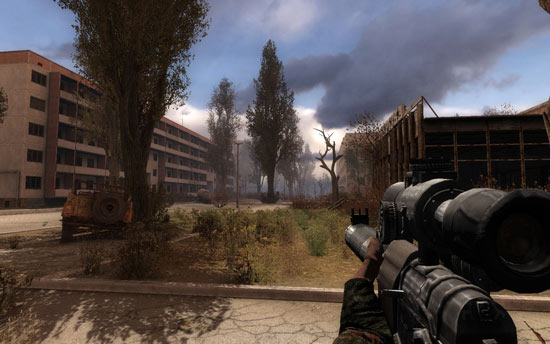ASUS UL50Vf Notebook Review – NVIDIA Optimus Takes the Stage
S.T.A.L.K.E.R.: Call of Pripyat

The events of S.T.A.L.K.E.R.: Call of Pripyat unfold shortly after the end of S.T.A.L.K.E.R.: Shadow of Chernobyl following the ending in which Strelok destroys the C-Consciousness. Having discovered the open path to the Zone’s center, the government decides to stage a large-scale operation to take control of the Chernobyl nuclear plant.
S.T.A.L.K.E.R.: Call of Pripyat utilizes the XRAY 1.6 Engine, allowing advanced modern graphical features through the use of DirectX 11 to be fully integrated; one outstanding feature being the inclusion of real-time GPU tessellation. Regions and maps feature photo realistic scenes of the region it is made to represent. There is also extensive support for older versions of DirectX, meaning that Call of Pripyat is also compatible with older DirectX 8, 9, 10 and 10.1 graphics cards.
The game S.T.A.L.K.E.R.: CoP has no internal benchmarking tools built into the game engine, but they do have a standalone benchmark available that we used for our testing purposes. Given that we are dealing with an entry level graphics processor, we selected the Low preset setting with ‘Enhan, full dyn, lighting (DX 10)’ renderer and a 1280×720 resolution.

Results: Here we see more evidence that the G210m NVIDIA GeForce card should not have high expectations when it comes to 3D Gaming. While it may be possible, it may not be worth the low performance for many.

Comments are closed.